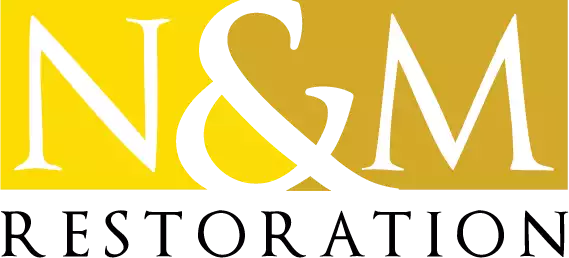Mortar joints are an essential component of any masonry structure. They serve as the binding agent that holds bricks, stones, or concrete blocks together. However, over time, mortar joints can deteriorate due to weathering, moisture, and other environmental factors. When this happens, it is crucial to repair them promptly to avoid further damage and structural issues.
In this article, we will discuss the importance of mortar joints, signs of deterioration, and how to repair them.
Importance of Mortar Joints
Mortar joints are critical to the structural integrity and stability of masonry structures. The strength of a masonry wall or structure depends on the quality of the mortar and how well it binds the individual units together. Mortar also helps to distribute the load and stress evenly across the entire structure, preventing cracking and other forms of damage.
Mortar joints also play an aesthetic role in masonry structures. They define the appearance of the structure and can be customized to create different patterns and textures.
Signs of Deteriorating Mortar Joints
Deteriorating mortar joints can be identified through various signs. Some of these signs include:
- Cracks in the mortar
- Discoloration or staining of the mortar
- Loose or missing pieces of mortar
- Water penetration or moisture in the structure
- Efflorescence (white, powdery substance on the surface of the masonry)
Repairing Mortar Joints
When mortar joints begin to deteriorate, it is essential to repair them as soon as possible to avoid further damage. Here are the steps to follow when repairing mortar joints:
- Remove the damaged or deteriorated mortar: The first step is to remove the damaged or deteriorated mortar using a hammer and chisel or an angle grinder. Be careful not to damage the bricks or stones.
- Clean the joints: Once the damaged mortar is removed, use a wire brush or a vacuum to clean the joints thoroughly. This will remove any debris or loose particles that could affect the bonding of the new mortar.
- Mix the new mortar: Use a mortar mix that matches the original color and texture of the existing mortar. Mix the mortar according to the manufacturer’s instructions.
- Apply the new mortar: Using a trowel, apply the new mortar to the joint, making sure it is evenly distributed. Use a pointing tool or a finger to shape the mortar to match the existing joints.
- Let the mortar dry: Allow the new mortar to dry for at least 24 hours before applying any sealant or paint.
Preventing Future Damage to Mortar Joints
- To prevent future damage to mortar joints, it is essential to maintain the structure and address any issues promptly. Here are some tips to help prevent future damage: Regularly inspect the structure: Regular inspections can help identify any signs of damage or deterioration in the mortar joints before they become severe.
- Keep the structure clean: Regular cleaning can prevent the buildup of debris, mold, and other substances that can damage the mortar.
- Control moisture: Moisture is one of the leading causes of mortar joint damage. Ensure that water is directed away from the structure, and that the drainage system is functioning correctly.
- Use appropriate sealants: Applying appropriate sealants can protect the mortar joints from water penetration and other environmental factors that can cause damage.
- Avoid using harsh cleaning agents: Harsh chemicals can damage the mortar joints, so it is essential to use mild cleaning agents when cleaning the structure.
Repairing mortar joints can be a DIY project for those who have experience with masonry work and the right tools. However, it is essential to consider the extent of the damage and the complexity of the repair before deciding whether to tackle the project yourself or hire a professional.
DIY Mortar Joint Repair
If the damage to the mortar joints is minor, such as small cracks or missing pieces, a DIY repair can be a cost-effective option. DIY repairs can also be a good option for those who have experience with masonry work and have the necessary tools and materials.
When attempting a DIY repair, it is important to follow safety precautions, wear appropriate protective gear, and carefully follow the manufacturer’s instructions for the mortar mix. It is also important to ensure that the new mortar matches the color and texture of the existing mortar to maintain the appearance of the structure.
Hiring a Pro for Mortar Joint Repair
If the damage to the mortar joints is extensive, such as large cracks or missing sections, it may be best to hire a professional for the repair. A professional mason has the experience, tools, and expertise to handle complex repairs and ensure that the new mortar matches the existing mortar.
When hiring a professional, it is essential to do your research and choose a reputable and experienced contractor. Look for contractors who are licensed and insured and who have a portfolio of past work that demonstrates their skills and experience.
Additionally, hiring a professional for mortar joint repair can be a good option for those who do not have the time, skills, or tools to complete the repair themselves.
When to Hire a Pro for Mortar Joint Repair
Here are some situations when it may be best to hire a professional for mortar joint repair:
- Extensive damage: If the damage to the mortar joints is extensive or affects the structural integrity of the building, it is best to hire a professional.
- Historic structures: If the building is a historic structure, it is important to hire a professional who has experience working with historic masonry and can maintain the integrity of the structure.
- Lack of experience: If you do not have experience with masonry work, it may be best to hire a professional to avoid making costly mistakes.
- Safety concerns: Mortar joint repair can be a dangerous job, especially if the building is tall or difficult to access. Hiring a professional can ensure that the job is done safely and correctly.

